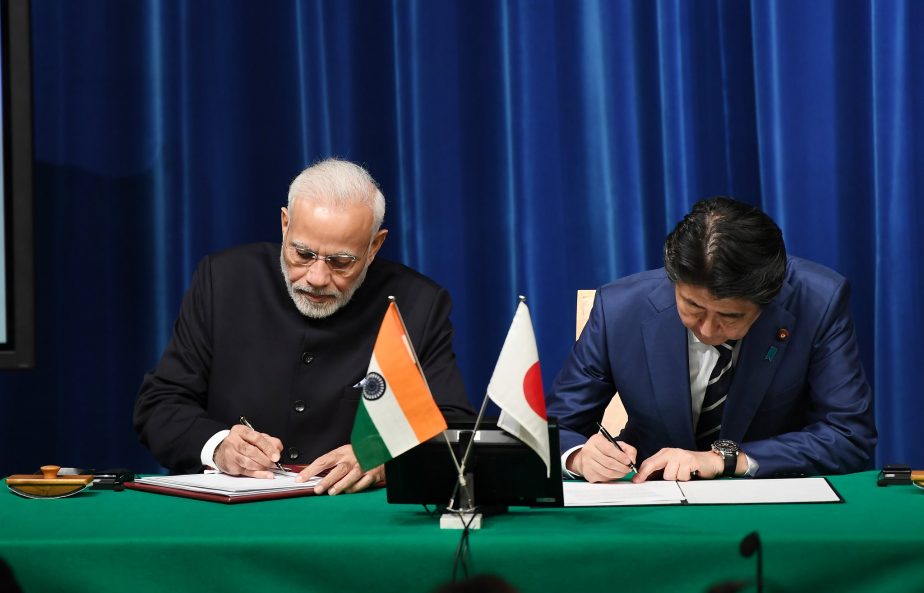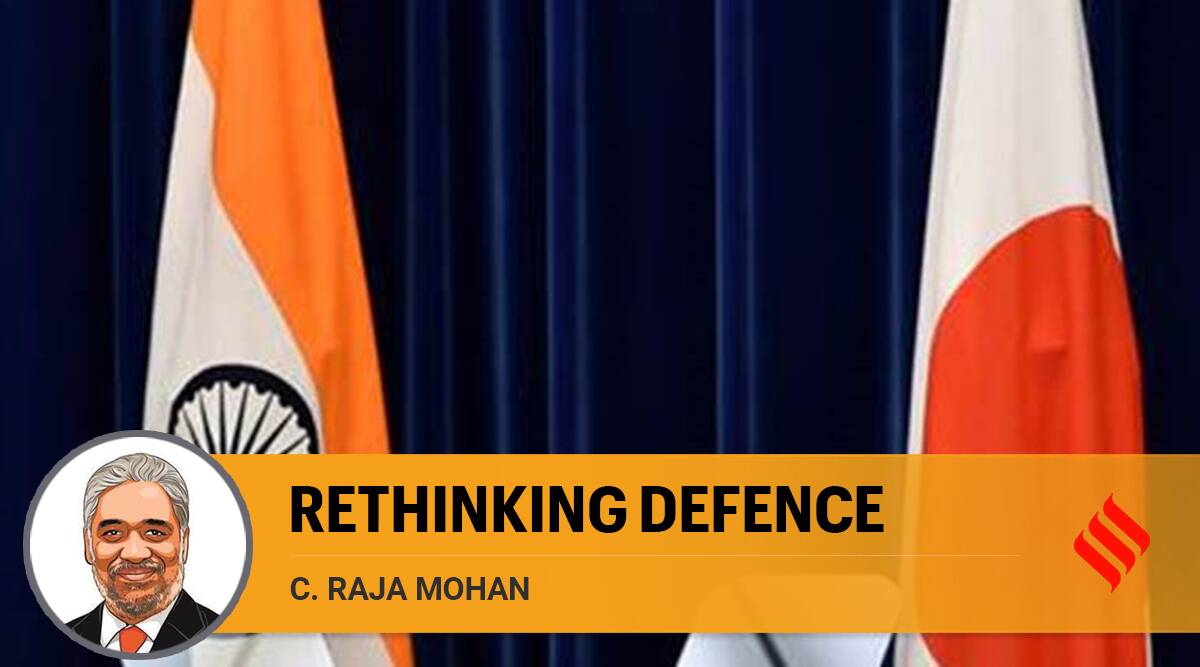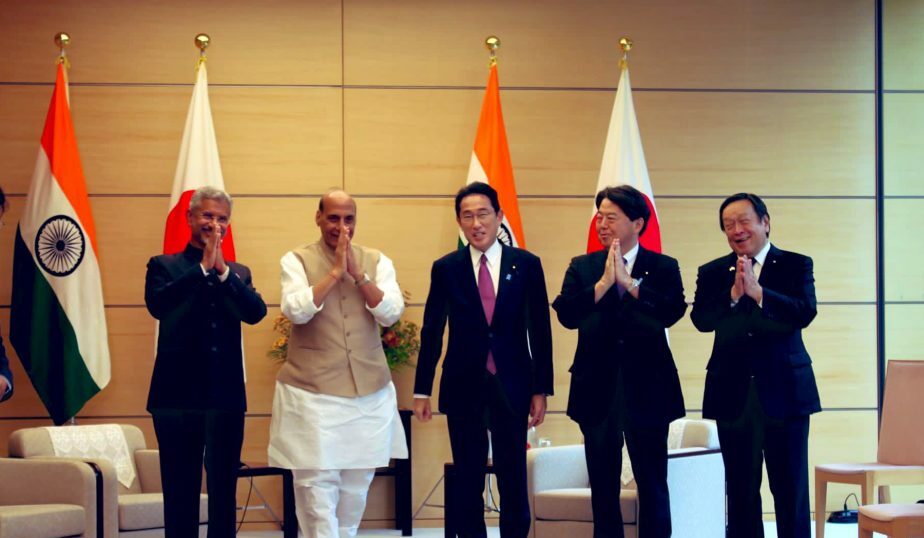Abe Shinzo’s Indo-Pacific Legacy
THE DIPLOMAT
APLN member Rajeswari Pillai Rajagopalan, Director of the Centre for Security, wrote on the influence of Abe Shinzo’s Indo-Pacific strategy, particularly its influence on India-Japan ties. Read the original article here.
Abe’s role and legacy in transforming Japan’s role in global affairs, as well as in enhancing India-Japan ties, cannot be emphasized enough.
Former Japanese Prime Minister Abe Shinzo’s assassination on July 8 has left a significant void in the Indo-Pacific. Not only has Japan lost an important leader, but the region has lost a statesman, visionary, and friend of India and the Indo-Pacific. Abe was the longest-serving prime minister of Japan, but more significantly he turned around Japan’s place in the Indo-Pacific and beyond.
Geopolitical gravity shifted toward Japan under Abe’s leadership, especially in his second stint as prime minister, starting in 2012. His first term as prime minister cannot be discounted, either. For instance, his visionary speech in the Indian Parliament in 2007 on the “confluence of the two seas” became the guiding principle for the Free and Open Indo-Pacific (FOIP) concept that has gained greater ground in recent years. Likewise, his conception of Asia’s “Democratic Security Diamond” — where Abe articulated that “peace, stability, and freedom of navigation in the Pacific Ocean are inseparable from peace, stability, and freedom of navigation in the Indian Ocean” — came during his first stint in office. With this backdrop, he foresaw a critical role for the major democracies in Asia including Australia, India, and the United States. Each of these became instrumental in the establishment of the Quadrilateral Security Dialogue, the Quad, among Australia, India, Japan, and the United States.
Abe’s tireless efforts at revitalizing Japan’s security role will be of lasting importance considering the dramatic changes underway in the security environment in the Indo-Pacific region. A rising China with aggressive designs on the region and a belligerent North Korea with growing nuclear and missile capabilities shaped Abe’s thinking on the kind of security role that Japan should play in the coming years. Given that constitutional reform is still to be achieved, Abe was not entirely successful in his efforts to change Japan’s security profile. But there have been important shifts over the last few years. Besides converting Japan’s Defense Agency to a Defense Ministry in 2007, there were also new institutional innovations undertaken in order to “manage arms production and explore the potential of exporting arms.” Furthering a broader security agenda, Abe’s government also was the first to come up with Japan’s National Security Strategy.
Abe’s ambitions went beyond arms exports. He wanted to bring about a change to Japan’s pacifist constitution in order to make the country a more capable power strategically to address the growing security threats in the region. Abe’s efforts have also been driven by the uncertainties and ambiguities around the U.S. alliance relationship. Even though concern about the credibility of the U.S. as a security guarantor is not unique to Japan and not a new concern, the relative decline of the U.S. and the dramatic rise of China have made these worries a lot more problematic. It is this thinking that probably also led the Abe administration to develop and strengthen new Asian strategic partnerships such as those with India and Australia. These relationships are meant to complement Japan’s relationship with the United States and not substitute for the U.S. security alliance partnership.
Similarly, Abe’s role in changing the direction and pace of the India-Japan relationship is significant. The personal chemistry between Indian Prime Minister Narendra Modi and Abe further helped in consolidating the strategic partnership between the two countries. Acknowledging Abe’s role as well as reflecting New Delhi’s respect and affection for Abe, India observed a national day of mourning on July 9. Modi wrote in a blog about Abe as “an outstanding leader of Japan, a towering global statesman, and a great champion of India-Japan friendship.” He added that Japan and the world has “lost a great visionary. And, I have lost a dear friend.”
Abe’s pursuit of the India relationship remains a remarkable one, especially given the state of the relationship even in the early 2000s. Given the Cold War politics and their respective positioning in that frame, with Japan as a U.S. ally and India as a champion of the non-alignment movement that was frequently anti-American, Tokyo and New Delhi did not engage much. The relationship declined further when India conducted its nuclear tests in 1998. But the improvement in India-U.S. ties also led to the enhancement of the India-Japan relationship. This led to Japanese Prime Minister Mori Yoshiro’s visit to India in August 2000, which provided a fresh drive to the bilateral relationship. Mori and Prime Minister Atal Bihari Vajpayee pushed for the establishment of a “Global Partnership between Japan and India.”
Since 2005, the two governments also began annual summit meetings, with Koizumi Junichiro traveling to India in April 2005. During Prime Minister Manmohan Singh’s visit to Tokyo in December 2006, Abe and Singh upgraded the relationship to “Special Strategic and Global Partnership.” When Modi became prime minister, his summit meeting with Abe in September 2014 transformed the relationship, with the two leaders signing a joint statement called “Tokyo Declaration for Japan-India Special Strategic and Global Partnership.”
The partnership between the two Asian powers expanded and deepened in multiple sectors including the political, security, economic, and military arenas, and also led to increased people-to-people and academic exchanges. But the most significant development in the bilateral relationship was the conclusion of the civil nuclear agreement in November 2016, indicating the quality and depth of the India-Japan strategic partnership. For Japan, the only country in the world that has been attacked with nuclear weapons in wartime, this was incredible. It is an indication of the strategic trust that exists between India and Japan. It also reflected the personal commitment and determination of Abe. Like the civil nuclear agreement between India and the U.S., the India-Japan agreement eliminated India’s pariah status and opened new avenues for cooperation.
Another equally important reflection of this strong partnership is India’s invitation to Japan to take part in infrastructure, connectivity, and development projects in India’s sensitive border areas, including the Northeast and the Andaman and Nicobar Islands. India has remained particularly sensitive about these projects on the border; that Tokyo is involved is a testament to the strength of the bilateral partnership.
Abe’s role and legacy in transforming Japan’s role in global affairs as well as in enhancing the India-Japan ties cannot be emphasized enough. Prime Minister Kishida Fumio and Modi have a hard task in carrying forward Abe’s legacy. The two leaders held their first summit meeting in New Delhi in March 2022 and a second meeting of the two leaders took place on the sidelines of the Quad Summit in May this year. The prognosis for the relationship appears to be good, and it is likely that Abe’s vision for the India-Japan relationship will be taken forward.
Image: India’s Prime Minister Narendra Modi and Japan’s Prime Minister Abe Shinzo signing agreements during a 2018 visit by Modi to Tokyo, Indian Ministry of External Affairs




